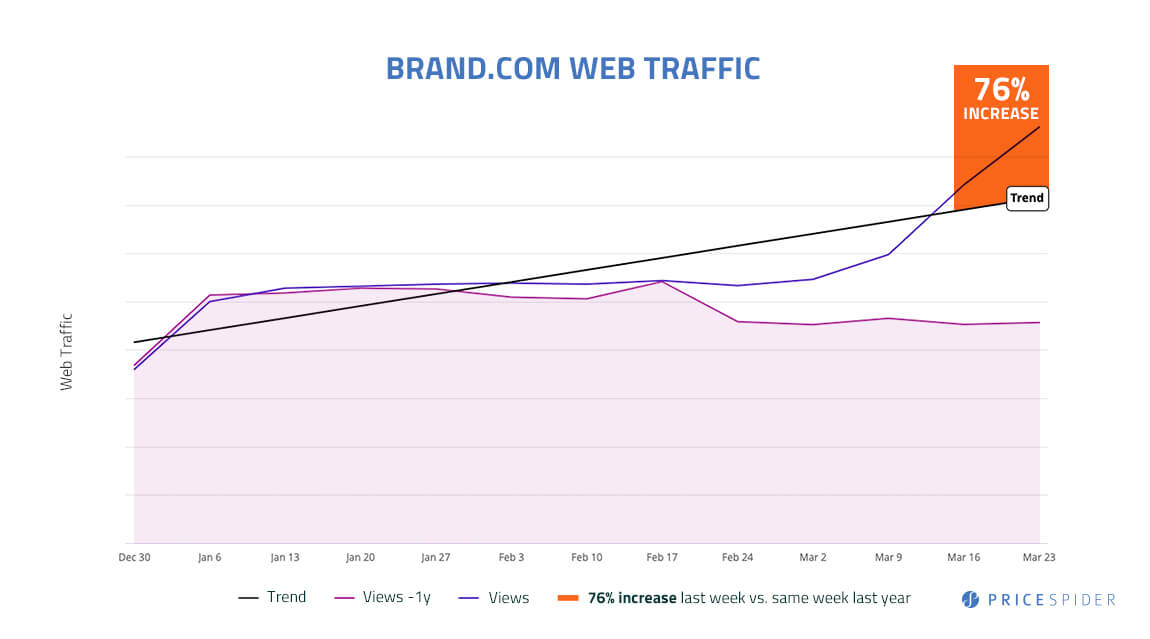Ecommerce Beginnings
In the early beginnings of the internet, it was a simpler time. Hotmail was the preferred email domain, social media was a chatroom, and a little startup called Amazon apparently had a dream of selling books on the internet with the promise of free shipping. For most, Amazon was quickly overlooked as a crazy pipedream and few imagined how it would shape ecommerce into what it is today.
Back then, the role of the brand website was really about engagement, entertainment, and experience. Everything from sweepstakes and games and endings to suspenseful superbowl commercials were hosted there. Big brands invested massive resources into video and technologies like flash, sending customers to their website for exclusive content via traditional and digital advertising.
Amazon’s Role in Brand.com
As Amazon evolved into an all industry marketplace, the role of brands’ digital responsibility changed as well. Now, instead of just having to manage information and entertainment on their own brand websites, they had to shift their focus over to new online retail outlets like Amazon where the Product Detail Page (PDP) was born.
Some brands had to decide if they wanted to continue to focus on their own website or this new online retail channel, while others weighed the decision of building their own ecommerce infrastructure and trying their hand at Direct to Consumer (D2C). All in, brand marketers’ jobs got complicated, they had to manage everything their brand touched on the internet. They had responsibilities for SEO, content, digital experiences, video, storytelling, and any other way people might discover them, and at the heart of it, how to drive purchase decisions.
Product Detail Page Killed Brand.com
As PDP (Product Detail Page) became a household name, it was decided the way to win digital sales was by shortening the path to purchase. Brand marketers used media in order to drive traffic directly to retailers as there was a shift to performance marketing. Suddenly, the role of the brand website was somewhat diminished, was now table stakes, and a bit of a relic of pure brand entertainment strategies of yore.
Now, especially for larger brands, brand.com is a place where you host every intimate detail and configuration of every product you sell. But, because a brand is a living breathing thing, it’s not a bad idea to show some of that brand personality, afterall, brands should still have some fun.
But who says you can’t have both the brains and the brawn? The role of the brand website can be informative, fun, engaging, AND drive sales. The key is to not look at the ecommerce and brand experience separately, but rather holistically.
COVID-19 and ecommerce
Brands now more than ever need to focus on the customer experience and not just rely on a retailer to do so by keeping their PDP up to date with current best practices. Nothing can be more evident of the importance this has than the recent change in consumer behavior in the face of the COVID-19 Pandemic. As both ecommerce marketplaces and brick and mortar retailers experienced supply volatility, consumers flocked to brand websites to try and find products. We saw a massive brand adoption event that resulted in the resurgence of the brand website. The PriceSpider platform saw an increase of 76% YoY in just the last full week of platform data, and a 92% increase in click through rates to retailer websites in the last 20-days alone as online shopping surged.

As is evidenced by this recent pandemic, the more control a brand has over its customer experience, the better they’ll be able to optimize that experience, which will not only result in higher conversion rates, but a solid customer journey that then reinforces brand loyalty. When you control that path to purchase, you don’t force any specific channel, but enable choices for your consumers, by letting them self-select how they buy, where they buy, compare products they want, and explore ratings and reviews of other customers. If you control that path, you are able to optimize multiple digital touchpoints that serve consumers best. And in a time of crisis, where supply chains are under immense stress, the world is experiencing uncertainty, and consumers are searching for products, guidance, and answers, having control of this is essential, not only from a brand perspective, but so you can be there to help.
The Future of Brand.com, Ecommerce, and Retail
When major changes happen in the world, major shifts in consumer behavior follow. As traffic and clicks continue to trend up on brand websites with a PriceSpider Where to Buy Solution, it’s resulting in an increase in sales conversions of 85% in the last 20-days as well. So if anyone is still doubting the importance of the brand website, not only for the brand itself but for its consumers, it’s time to re-rethink its role in serving customers. Optimizing digital touchpoints for conversions doesn’t just support the brand itself, it serves consumers, especially in a crisis.
So here we are, back where it all started, before Amazon was Amazon and hotmail was hot. Yes PDPs are still a thing and with the vast expansion of the digital realm as we know it, it only gets more complicated for brands. But, you’re worth the effort and so are your customers. As there is a lot of uncertainty out there right now, the silver lining is that the current crisis will eventually come to an end, and life will return to what will become normal again.
As the ecommerce adoption curve has been significantly flattened, especially for categories like Food and Beverage, I believe we’ll see some of that trend stick as more consumers have found comfort, ease, and convenience in turning to ecommerce for needs that were previously reserved for brick and mortar. But, as the world heals from this pandemic, and quarantines are lifted in our local communities, we anticipate a mass resurgence of brick and mortar retail as Americans clamor to get out, anywhere, even if it’s just to buy toilet paper because they can.
But, before they do, they may now first take a look at your brand website to ensure what they want is in stock before they leave, and may even opt to BOPIS (Buy Online Pickup In Store), after we’ve all been cooped up for a spell, a ride to Target to pick up some TP on a nice spring day sounds delightful.
Optimize the Customer Experience
Lucky for brand.com, if it’s equipped with the PriceSpider Platform and all the advantages that come with it, your customer journey will be optimized as you’ll be able to bridge the gap between ecommerce and brick and mortar with real time price and stock, ratings and reviews, and BOPIS (Buy Online Pickup In Store). Having a Platform like this enables an all channel approach to retail (both online and in store), ensuring that your brand is optimized for sales conversion and is able to delight customers by not just saying your brand is instantly shoppable at any digital touchpoint you have…but actually making your brand shoppable, wherever they are.

